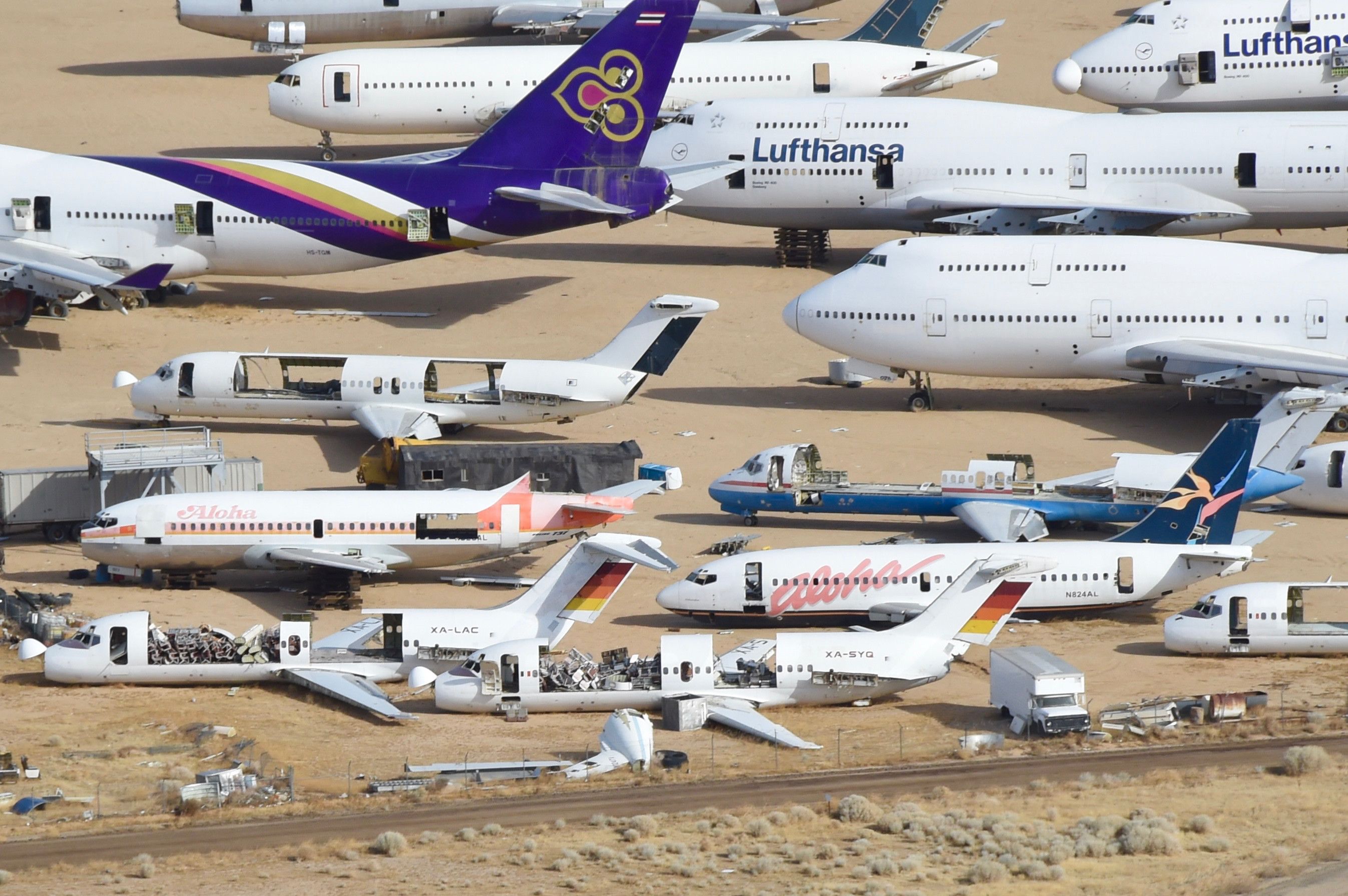The sudden widespread grounding of aircraft over the COVID pandemic drove home the importance of large aircraft storage facilities. The world’s biggest storage sites are most often located in desert environments, which offer many unique advantages over other locations. Let’s look at why this is the case.
The climate
The temperature and humidity of desert storage sites are ideal for aircraft to be sitting stationary for long periods of time – or at least the conditions are not as bad as other environments. The lack of rain and moisture offers the best conditions for aircraft storage, reducing the risk of damage due to corrosion of the airframe and other aircraft components.
Photo: Aitor Serra Martin | Shutterstock
This is not to say desert storage facilities are completely immune to adverse weather events. For example, Lufthansa was forced to lower its selling price for six Airbus A380s after they suffered storm damage in Teruel (TEV), one of the world’s most well-known desert storage locations.
Desert environments tend to have fewer insects and wildlife. While little critters do exist in these arid climates as well, the lack of vegetation and water makes it less likely. This is a factor as birds and bugs may see aircraft as ideal places for nesting. Asia Pacific Storage, an aircraft facility located in Alice Springs, Australia, noted,
“Alice Springs offers the perfect environment for the preservation of aircraft and their inherent capital value. The facility benefits from an arid desert environment characterised by an average year round humidity of approximately 25%, outside Australia’s cyclone zone, low rainfall, and with low lying in situ vegetation providing additional dust suppression qualities.”
The space and terrain
A big factor for storage sites located in deserts is that they offer a vast amount of space. While airports do have parking facilities, their space is certainly more limited than those found at dedicated long-term storage sites.
Photo: Aero Icarus | Flickr
Airports would prefer to use what little space they have, whether it be gates or hangars, for more active aircraft. Therefore, long-term storage opportunities at airports are usually limited. On the other hand, there’s not much competition for land in the desert – this makes land acquisition costs low for storage facility operators and the rent cheap for airlines and planemakers.
Some desert sites also have ideal terrain that is dry, hard, and does not need paving. In other environments, the weight of a large commercial aircraft may cause the land beneath it to sink over an extended period of time.
Popular desert sites
Whether carriers want to ground their fleets temporarily or send off unwanted aircraft to their demise, they’ll probably end up in an aircraft ‘boneyard’, likely located in a desert. The demand for space suddenly skyrocketed with the outbreak of the COVID pandemic, with aircraft worldwide immediately grounding a significant chunk, if not all, of their fleet.
Here are some of the most well-known desert storage sites around the world:
- Asia-Pacific Aircraft Storage in Alice Springs, Australia
- Southern California Logistics Airport in Victorville, California
- Pinal County Airpark in Arizona
- Davis-Monthan Air Force Base and Pinal Air Park outside of Tucson, Arizona
- Teruel Airport in Spain.
- Mojave Air and Space Port in California
- Roswell International Air Center in New Mexico
Aircraft boneyards can be fascinating places, containing a mix of historic, abandoned planes are second-hand jets on their way to a new operator.
Have you visited an aircraft graveyard? Please share your experience with us in the comment section.




